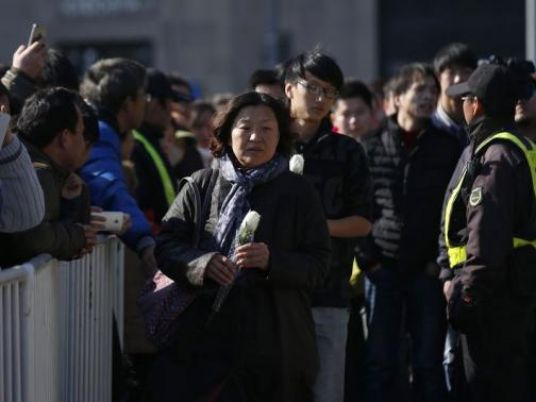
A stampede killed at least 36 people during New Year's Eve celebrations in Shanghai, authorities said, possibly caused by people rushing to pick up fake money thrown from a building overlooking the city's famous Bund waterfront district.
The government in China's gleaming business capital said large crowds started to stampede in Chen Yi Square on the Bund just before midnight in the cosmopolitan city's worst disaster since 58 died in an apartment building fire in 2010.
The trigger for the stampede has still to be confirmed, but state media and witnesses said it was at least partly caused when people tried picking up coupons that looked like bank notes.
A man who brought one of the 47 injured to hospital for treatment said fake money had been thrown down from a bar above the street as part of the New Year's Eve celebrations. People rushed to pick up the coupons, triggering the stampede, said the man, who gave his family name as Wu.
Cui Tingting, 27, said she had picked up some of the bank notes but had thrown them away when she realised they were fake.
"It's too cruel. People in front of us had already fallen to the floor, and others were stepping all over them," she said.
State television cited others as saying the fake bills came fluttering down "like snow".
Shanghai police said they were not yet able to confirm whether the fake money was the cause of the stampede, adding that a probe was ongoing and asking people be patient, according to state television.
The glass doors to the bar, whose name appeared on the fake bills, was locked on Thursday, though signs of the previous night's party could be seen with debris strewn on the floor.
People inside the bar did not answer the door when a Reuters reporter knocked.
Another witness, who gave his family name as Wei, said there also had been a problem away from the area where the fake bills were thrown, with people trying to get on to a raised platform overlooking the river.
Xinhua news agency said that people had been trampled on after falling down on the steps up to the platform.
"We were caught in the middle and saw some girls falling while screaming. Then people started to fall down, row by row," a witness surnamed Yin told Xinhua.
Some Chinese media outlets carried criticism of the authorities for lack of adequate policing and planning.
Police officer Cai Lixin said they did not have a large presence on the Bund as there were no formal New Year events planned, Caixin magazine said.
Foreign media were forbidden from attending a police press conference, underscoring government sensitivity about any critical coverage of disasters.
State media said many of the dead and injured were students, with 28 of the dead women.
Authorities had shown some concern about crowd control in the days leading up to New Year's Eve. They recently cancelled an annual 3D laser show on the Bund, which last year attracted as many as 300,000 people.
On New Year's Eve, Beijing also cancelled a countdown event in the central business district, Chinese media said, due to police fears about overcrowding.
President Xi Jinping has asked the Shanghai government to get to the bottom of the incident as soon as possible, and ordered governments across the country to ensure a similar disaster could not happen again, state television said.
The Shanghai government said on its official microblog that an inquiry had begun, and that all other New Year events had been cancelled.
Photographs on Weibo, the Chinese version of Twitter, showed densely packed crowds of revellers along the Bund where buildings from Shanghai's pre-communist heyday face the Huangpu River and house upscale restaurants, bars, shops and hotels.
In 2004, 37 people died in a stampede in northern Beijing, on a bridge at a scenic spot, during the Lunar New Year holiday.
